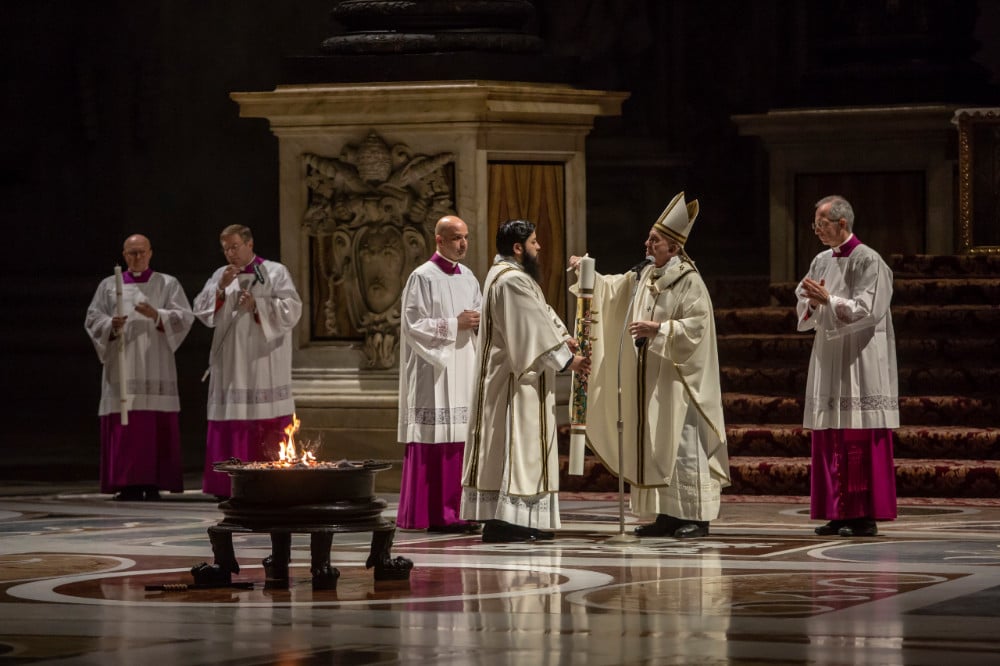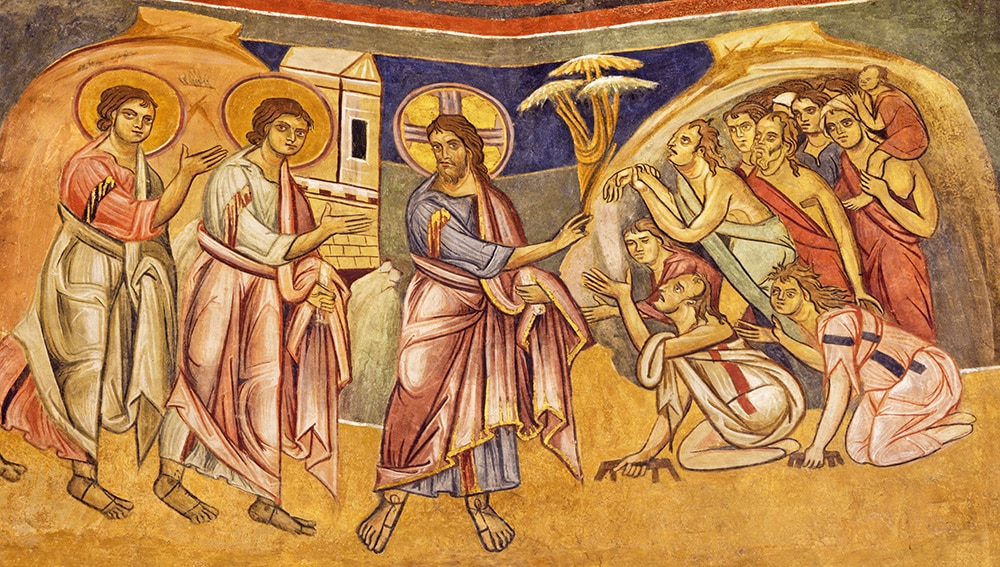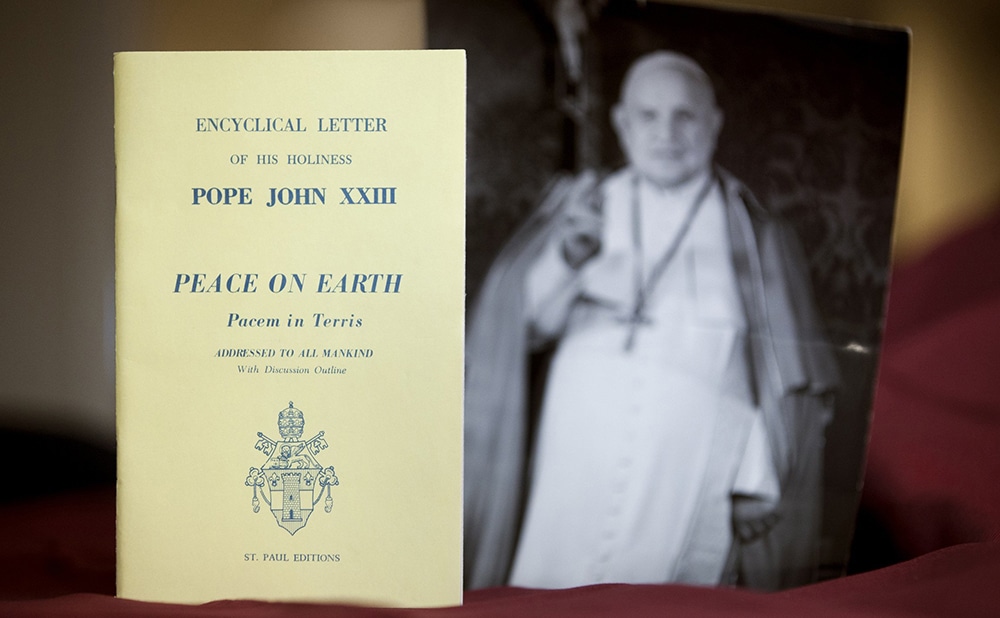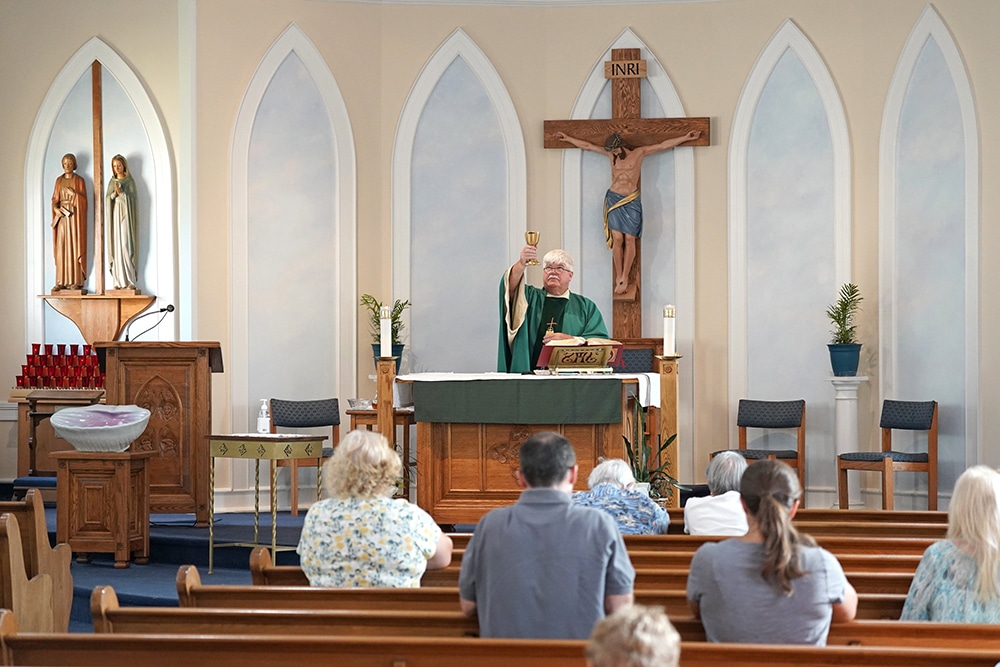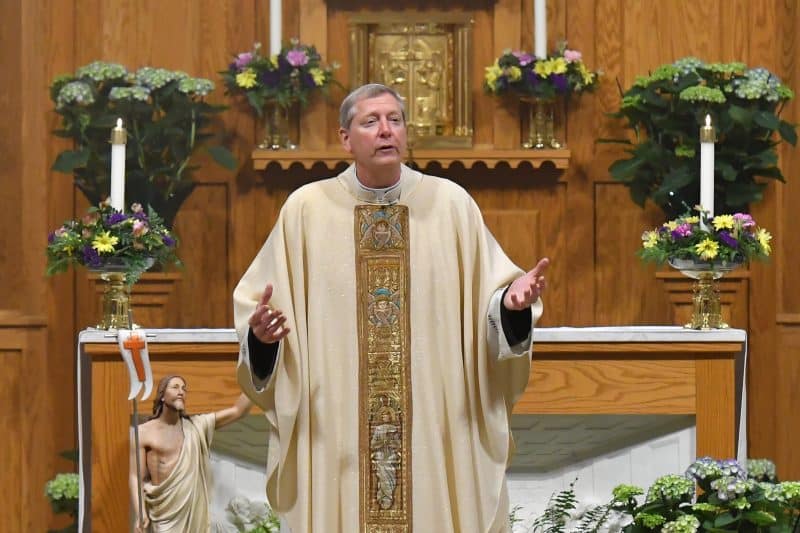If you were celebrating the Passover in Jerusalem in A.D. 30, you likely heard that the Sanhedrin had arrested Jesus of Nazareth. He was charged with blasphemy — a charge punishable by death under Jewish law. But the Jews did not have the authority to carry out such a penalty and had convinced the occupying Roman army that Jesus was also guilty of sedition and inciting people to rebel against Rome. The Roman procurator, Pilate, couldn’t find serious fault with Jesus but eventually succumbed to the demands of the Jews. Jesus was crucified and buried in a tomb.
The day following the Crucifixion was the Jewish Sabbath, a day given to God, when no work could be done. It was Saturday, what we know as Holy Saturday — part of the Paschal Triduum. The grief-stricken followers of Christ must have risen that day in a confused state, still staggered by the events of Friday. How could the one they called the Messiah be dead? How could this happen? As we today experience the somberness of Holy Saturday, we, too, are a little confused, even though we are aware of how the story ends. It is a day of gloom and darkness, but we know the gloom or darkness eventually gives way to joy. We know that our Savior has been resurrected. The tomb could not contain him.
Guards at the tomb
Only in Matthew’s Gospel is there a mention about events that took place on the Sabbath, Holy Saturday. On the day following the Crucifixion, the Jews (Pharisees) went to Pilate and asked him to post a guard at the tomb of Jesus (cf. 27:63-65). They said to Pilate: “Sir, we remember that this imposter while still alive said, ‘After three days I will rise up.’ Give orders, then, that the grave be secured until the third day, lest his disciples come and steal him and say to the people, ‘He has risen from the dead.’ This last imposter would be worse than the first.” Pilate agreed, and a guard or guards stood at the tomb.
It is ironic that Christ’s enemies thought he would rise from the dead but his friends seemed less sure. “After the sabbath, as the first day of the week was dawning, Mary Magdalene and the other Mary came to see the tomb. And behold there was a great earthquake; for the angel of the Lord descended from heaven, approached, rolled back the stone and sat upon it. His appearance was like lightning and his clothing was white as snow. The guards were shaken with fear of him and became like dead men” (Mt 28:1-4).
The angel tells the women that “he is not here but has been raised just as he said” (Mt 28:6) The guards go to the chief priests, report the situation and are bribed to say that “his disciples came by night and stole him while we were asleep” (28:13). How they could have known who stole the body while they slept reveals their lie. While the Jews celebrated the Sabbath and the Romans slept at the tomb, Jesus was performing a miracle.
Descent to hell
In addition to our varied emotions, there is something else happening on Holy Saturday — something that some of us overlook or don’t fully comprehend — something not mentioned in the Scriptures: “He descended into hell.” The quote is from the Apostles Creed — an article of faith that every Catholic is expected to believe. Jesus descended into hell, where he, despite being crucified, dead and buried, performed another miracle: “love penetrated hell” (Pope Benedict XVI, May 2, 2010).
Church Fathers and others have explained that “hell” as used in the Apostles Creed does not refer to the place of eternal damnation or Gehenna. No, the place to which Jesus descended was “Sheol,” Hebrew for hell. The Catechism of the Catholic Church says: “Scripture calls the abode of the dead, ‘hell’ — Sheol in Hebrew or Hades in Greek — because those who are there are deprived of the vision of God … Jesus did not descend into hell [Gehenna] to deliver the damned, nor to destroy the hell of damnation, but to free the just who had gone before Him [to Sheol]” (No. 633). Jesus distinguishes Gehenna as the place “where ‘their worm does not die, and the fire is not quenched'” (Mk 9:48). Jesus did not descend to Gehenna.
Until the Crucifixion, the “just” from every era since the beginning of time had been waiting in Sheol to enter heaven; now, Jesus offers them eternal life in the presence of God. Part of an ancient homily, prayed during the Liturgy of the Hours on Holy Saturday, reads: “I [Jesus] now by my own authority command all who are held in bondage to come forth, all who are in darkness to be enlightened, all who are sleeping to arise. I order you, O sleeper, to awake. I did not create you to be held prisoner in hell… Rise let us leave this place.”
The Easter Vigil
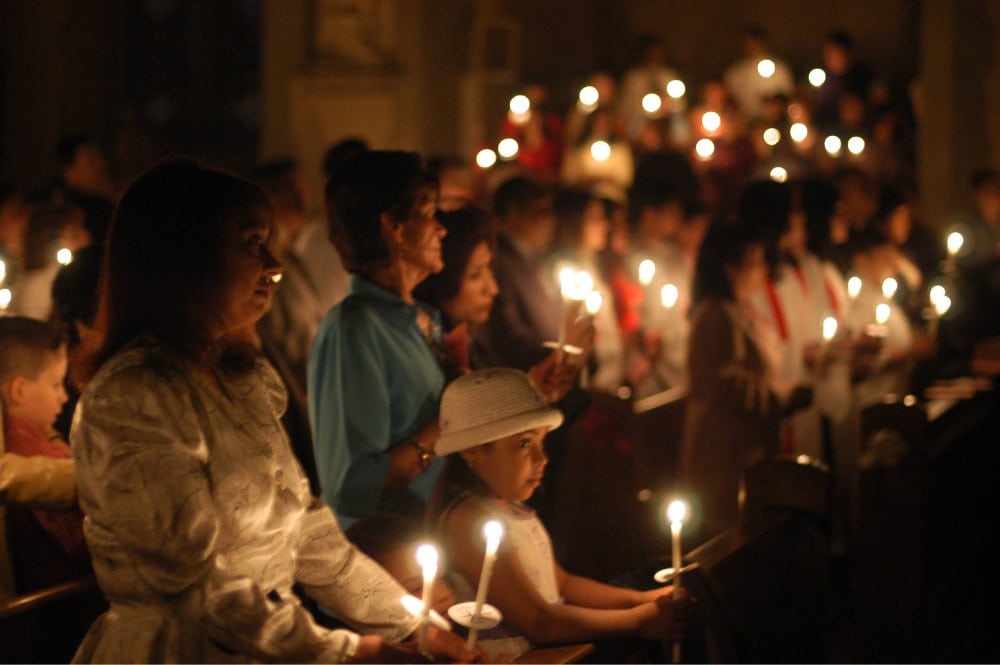
In Church history, the Easter Vigil did not always begin on Holy Saturday night. Near the fourth century, a Saturday nighttime vigil including the Service of Light, the Liturgy of the Word, Liturgy of Baptism and Liturgy of the Eucharist, lasting until midnight was indeed widely observed. Beginning in the eighth century, the vigil started on Saturday afternoon, and in the 12th century, it was moved to begin on Holy Saturday morning. Pope Saint Pius V (r. 1566-72) issued a papal bull in 1566 forbidding any Mass to begin after noon; thus, observing the vigil on Holy Saturday morning was obligatory. The daytime vigil celebrations were, in part, caused by the fact that Holy Saturday was a day of strict fasting, and people fasted until after they received holy Communion which, with a nighttime vigil, was late.
Celebrating the vigil rituals during daylight would seem strange to us today, and we are not alone with such thoughts. For example, in 1914, Father Herbert Thurston wrote in his book, “Lent and Holy Week,” that “it is difficult for us to persuade oneself on Saturday morning that the sun has already set, that our watch is nearly over, that more than 24 hours have elapsed since our Blessed Lord was laid in the tomb. That is, however, the effort of the imagination which the Church requires us to make.” The timing took away from the symbolism associated with the Service of Light, and the holy events during darkness used to contemplate the resurrection of Jesus on Easter morning. In the 1950s, after a thousand years, the Church brought back the vigil to begin after darkness on Holy Saturday night.
No Celebrations
In some Roman Catholic locations, Holy Saturday is a time given only to prepare for the Easter Vigil and, perhaps, bless the Easter bread. Holy Mother Church tells us that no Mass is permitted until the vigil, Communion can only be given to the dying, and marriage is forbidden. Given the rules associated with Holy Saturday, the Church has provided recommendations on activities that could draw Roman Catholics closer to the meaning of the day.
In a letter published February 1988 concerning preparation and celebration of Easter feasts, the Congregation of Divine Worship wrote: “On Holy Saturday the Church is as it were at the Lord’s tomb, meditating on his passion and death, and on his descent into hell, and awaiting his resurrection with prayer and fasting. It is highly recommended that on this day the Office of Readings and Morning Prayer be celebrated with participation of the people. Where this cannot be done, there should be celebration of the Word of God, or some act of devotion suited to the mystery celebrated this date. The image of Christ crucified or lying in the tomb, or the descent into hell, which mystery Holy Saturday recalls, as also an image of the Sorrowful Mother can be placed in the Church for the veneration of the faithful.”
D.D. Emmons writes from Pennsylvania.

